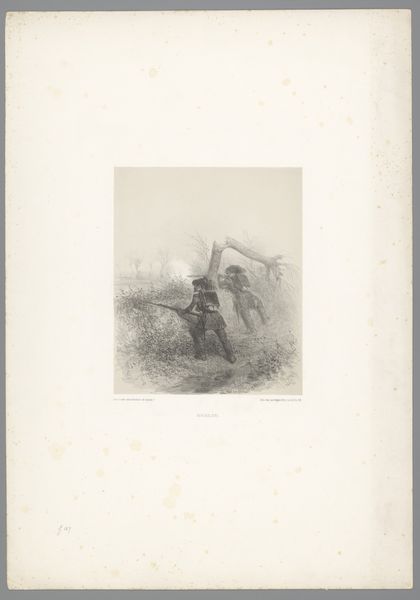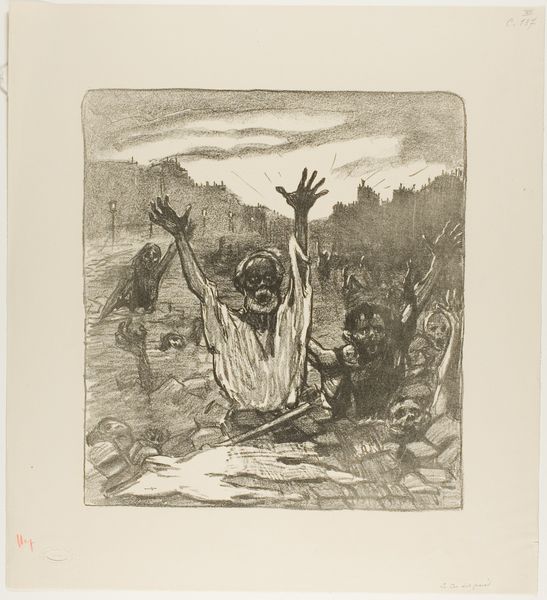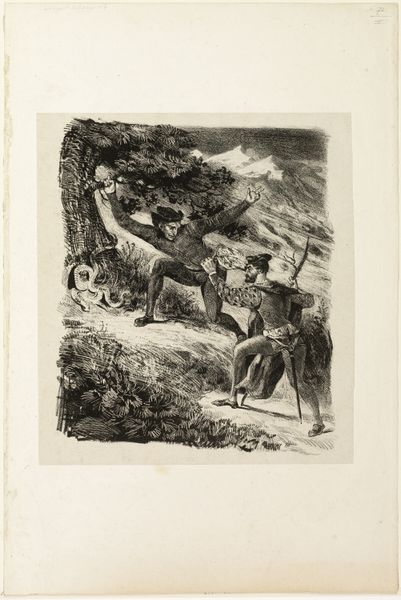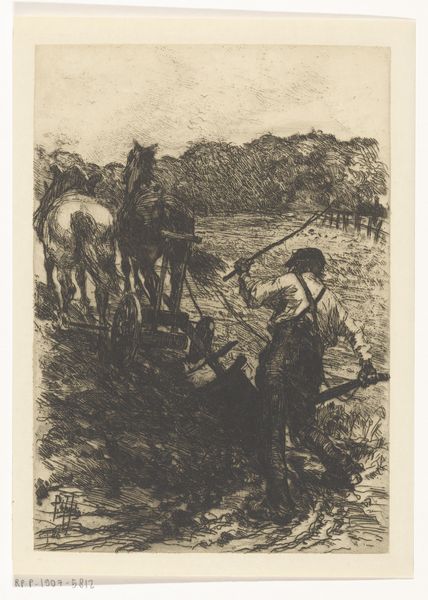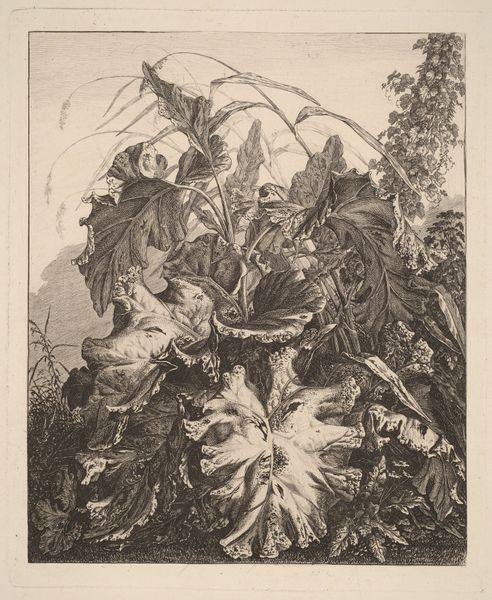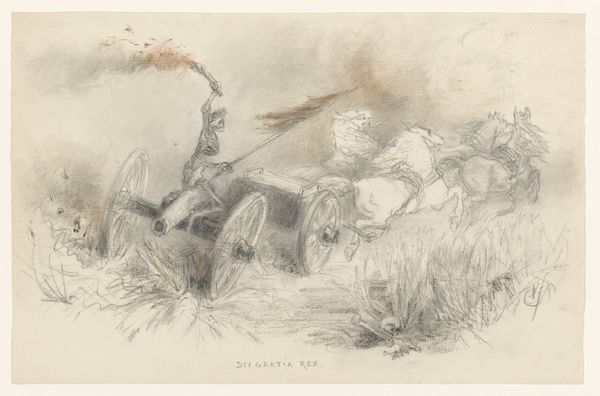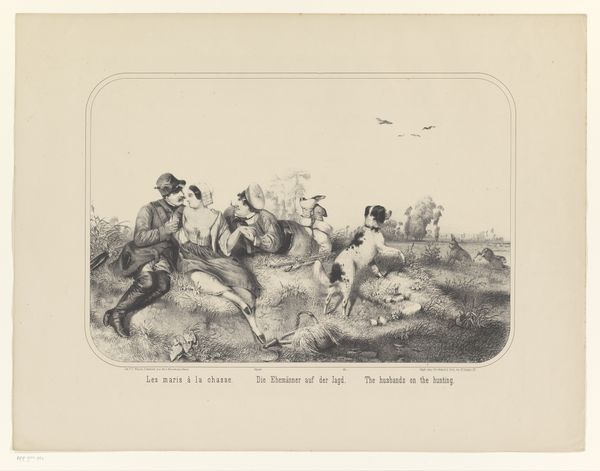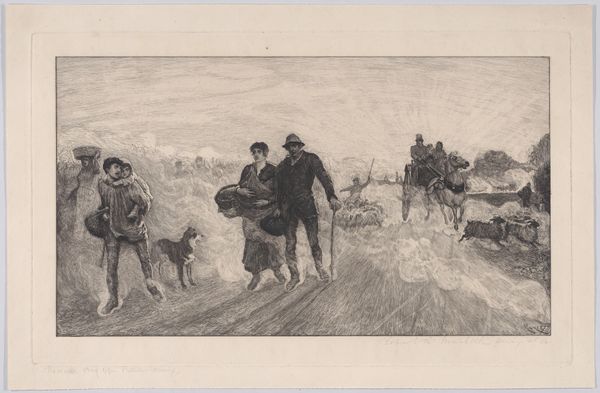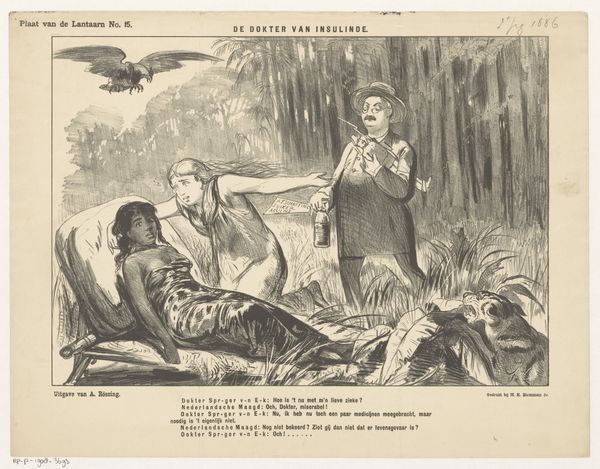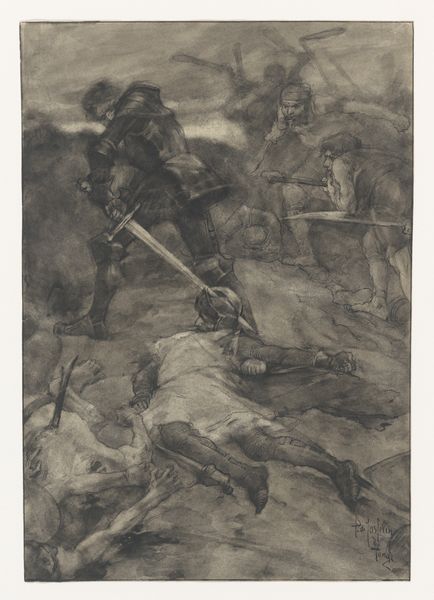
Dimensions: height 296 mm, width 228 mm
Copyright: Rijks Museum: Open Domain
Editor: This drawing by Willem Steelink, made between 1836 and 1913, titled "Hunted Lion Attacking a Man", is quite striking. It’s done in ink, and it depicts a very dramatic scene. What’s particularly fascinating to me is the almost illustrative quality of the linework; how would you unpack its artistic choices? Curator: Well, consider the means of production itself. Ink, often associated with print and reproduction, challenges the supposed "aura" of the unique artwork. Steelink's choice isn't accidental; it situates this 'historical' scene within a broader context of disseminating images and constructing narratives accessible to a wider public. Notice how the artist focuses on the physicality of the conflict – the lion’s claws, the man’s strained posture, the sharp, hurried strokes creating a sense of frantic energy. The raw material and how he has rendered the labour, right? Editor: So you're saying the choice of ink diminishes any sense of a "unique" artistic creation in favor of narrative? Is the romantic depiction a marketing tool, or just a narrative about colonialism? Curator: Precisely. The 'Romantic' style of illustrating here isn’t merely aesthetic; it directly relates to the economics and labour inherent in making pictures. Think of printmaking, illustration in books…It invites viewers to consume a spectacle and the consumption and mass reproducibility diminishes the uniqueness. Editor: That's interesting, I never thought about Romanticism having marketing and labour angles before. Thank you! Curator: Likewise. Considering art as a product of its material conditions certainly changes how we value it.
Comments
No comments
Be the first to comment and join the conversation on the ultimate creative platform.

